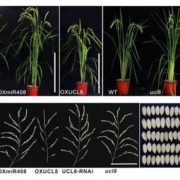
A MicroRNA Affecting Grain Yield in Rice
Blog, Plant Physiology, Plant Physiology: On The Inside, Research, Research BlogMicroRNAs (miRNAs), a class of abundant small noncoding RNAs, have been identified as important regulators of gene expression in plants, affecting many aspects of plant development. Recently, several miRNAs have been reported to regulate rice grain yield. A previous study revealed that miR397 regulates…
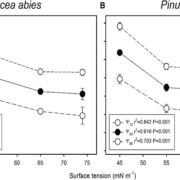
Xylem Sap Surface Tension and Hydraulic Safety
Blog, Plant Physiology, Plant Physiology: On The Inside, Research, Research BlogXylem embolisms are induced by drought stress and/or freezing stress by means of “air-seeding,” that is the aspiration of gaseous bubbles into xylem conduits from adjacent gas-filled compartments via the pits. At water potentials less negative than the threshold for air seeding, the air-water interface…
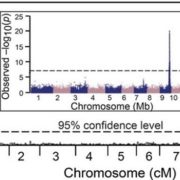
Chemical Defenses of Maize Roots
Blog, Plant Physiology, Plant Physiology: On The Inside, Research, Research BlogOf the many classes of natural products produced by plants, terpenoids are the most structurally diverse, with well over 25,000 established compounds. In maize (Zea mays), terpene olefins are nearly ubiquitous components of induced volatile emissions following biotic stress. In contrast to our understanding…

New Insights into Wound-Induced Callus Formation
Blog, Plant Physiology, Plant Physiology: On The Inside, Research, Research BlogPlants repair wound sites through the formation of unorganized cell masses called calli, which can also serve as progenitors of new organs. Callus formation and organ regeneration often entail cell cycle re-entry of quiescent cells, which is achieved through the re-activation of core cell cycle regulators…

Lignin Bioengineering in Poplar
Blog, Plant Physiology, Plant Physiology: On The Inside, Research, Research BlogLignified cell walls constitute an important renewable and sustainable feedstock for the production of fermentable sugars, biochemicals, and biomaterials. In biorefineries, plant cell wall polysaccharides are depolymerized into simple monomeric sugars, a process called saccharification. These sugars…

Update: Oxygen sensing and integrative stress signaling in plants
Blog, Plant Physiology, Plant Physiology: Updates, Research, Research BlogBy Romy Schmidt, Daan A Weits, Claudio FJ Feulner, Joost T. van Dongen
Plants grow in a dynamic environment and continuously face numerous stress conditions in parallel. This fluctuating environment pushed the evolution of extensive metabolic flexibility (Sweetlove et al., 2010; van Dongen et al.,…

Update: Cytoplasmic mRNA dynamics
Blog, Plant Physiology: Updates, Research, Research BlogBy Thanin Chantarachot and Julia Bailey-Serres
The export of an mRNA from the nucleus to the cytoplasm begins an odyssey of dynamic regulation that determines the location, longevity and use of the transcript in the production of polypeptides by ribosomes in plant cells. Recent leveraging of mutants,…
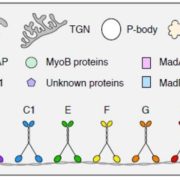
Update on Myosin Motors: Molecular Mechanisms and Physiological Functions
Blog, Plant Physiology, Plant Physiology: Updates, Research, Research Blog By Jennifer M Ryan and Andreas Nebenfuehr
The cytoskeleton is the main organizing principle that defines not only the distribution of cellular components within cells but also the overall shape and growth pattern of cells and entire multicellular organisms. This function is particularly evident in…
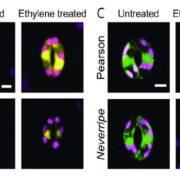
Flavonols Modulate ROS in Tomato Guard Cells
Blog, Plant Physiology, Plant Physiology: On The Inside, Research, Research BlogAlthough reactive oxygen species (ROS) have historically been considered damaging agents within cells, recent studies have demonstrated that these molecules also serve as second messengers in signaling pathways. The reactive nature of ROS allows these compounds to function as signaling molecules by reversibly…

